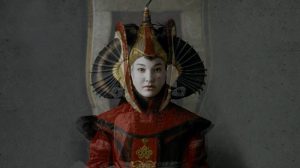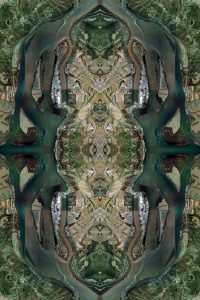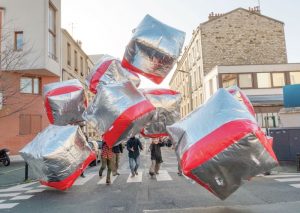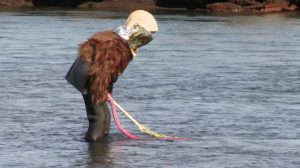Having investigated the dissolution of the appearances and the infra-thin layers of the electromagnetic spectrum in GAKONA and SPY NUMBERS, Marc-Olivier Wahler concludes this 2009 cycle with CHASING NAPOLEON; equal parts art exhibition and instruction manual of how to withdraw into seclusion and take refuge in the limits of the visible.
That’s the premise of the exhibition currently on view at the Palais de Tokyo in Paris. Chasing Napoleon appears to be revolving around the year 1977, but i never managed to find out why this particular year is the focus of attention.
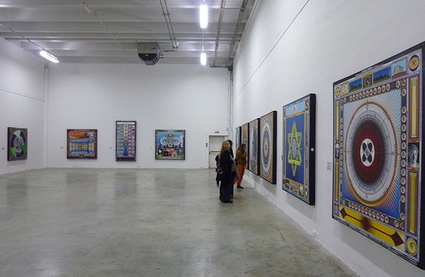
In 1977, Paul Laffoley finishes The Renovatio Mundi in his fifteen square meter atelier, and i seem to be the only one to find his paintings of visionary systems as aesthetically detestable as they are engrossing.
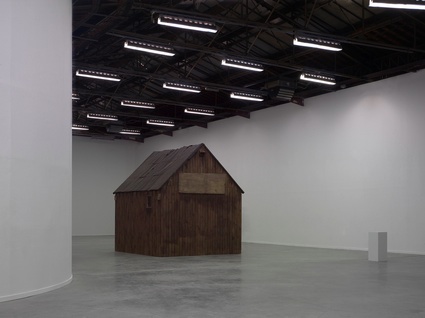 Robert Kusmirowski, Unacabine, 2008 + Tom Friedman, Untitled (A Curse), 2009. Exhibition view, “Chasing Napoleon”, 2009, Palais de Tokyo. Photographie : André Morin
Robert Kusmirowski, Unacabine, 2008 + Tom Friedman, Untitled (A Curse), 2009. Exhibition view, “Chasing Napoleon”, 2009, Palais de Tokyo. Photographie : André Morin
In 1977, Theodore Kaczynski – who would late be called the Unabomber – was living alone in a small cabin in Montana, without electricity or running water. The year after, he would start sending bombs to targets including universities and airlines, killing three people and injuring 23. He sent 16 bombs until 1995 when he wrote to The New York Times and promised “to desist from terrorism” if a major newspaper published his manifesto. In his text, titled Industrial Society and Its Future, he argued that his bombings were necessary to attract attention to the erosion of human freedom necessitated by modern technologies requiring large-scale organization.
The search for the Unabomber was FBI’s most expensive investigations. His location and identity was discovered when his brother recognized Ted’s style of writing and beliefs from the manifesto, and tipped off the FBI.
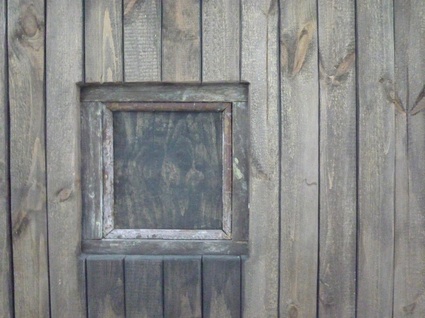 Robert Kusmirowski, Unacabine, 2008 (detail)
Robert Kusmirowski, Unacabine, 2008 (detail)
Kaczynski’s cabin was dismantled and stored in a warehouse in an undisclosed location. In July 2008 it was put on display at the Newseum in Washington, D.C., one of the approx. 200 artifacts featured in G-Men and Journalists: Top News Stories of the FBI’s First Century. Kaczynski objected to the public exhibition of the cabin, claiming it violated the victim’s objection to be publicly connected with the UNABOM case.
I first saw Robert Kusmirowski’s replica of the cabin at the New Museum’s After Nature exhibition but crammed as it was among many other artworks it didn’t have the impact that the vast space of the Palais de Tokyo gave it. I love Kusmirowski’s work (see Wagon and Machines from a past that never was) but this is a frustrating piece. You want to get inside but all you can see is the stern outer shell of the cabin.
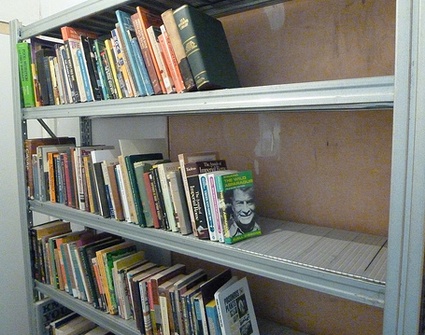 Dora Winter, The Unabomber Book Collection, 2008 – 2009
Dora Winter, The Unabomber Book Collection, 2008 – 2009
Another artwork sheds light on part of its content. Dora Winter managed to reconstitute most of the Kaczynski’s library. Caesar’s Gallic War, Psychology of Women, Stalking the Wild Asparagus, Rocky Mountain Wildflowers, Zapata and the Mexican Revolution, To Purge This Land With Blood, etc. Some of the volumes would entice you to believe they can only belong to a dangerous psychopaths, others reflect his remote and self-sufficient lifestyle. The presence of others, however, is more difficult to explain.
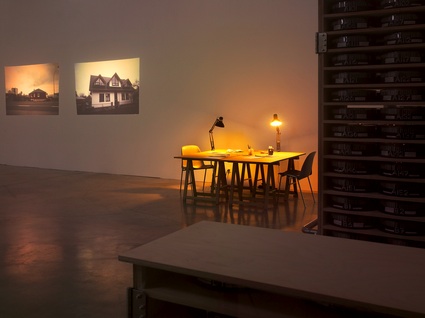 Dieter Roth, Reykjavik slides (1970-1975, 1990-1995). Exhibition view, “Chasing Napoleon”, 2009, Palais de Tokyo. Photographie : André Morin
Dieter Roth, Reykjavik slides (1970-1975, 1990-1995). Exhibition view, “Chasing Napoleon”, 2009, Palais de Tokyo. Photographie : André Morin
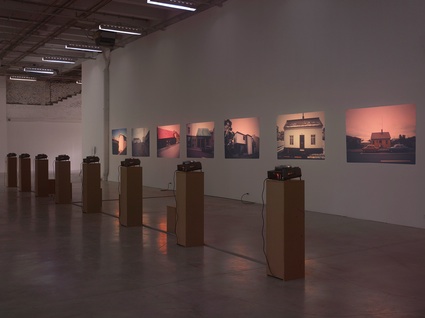 Dieter Roth, Reykjavik slides (1970-1975, 1990-1995). Exhibition view, “Chasing Napoleon”, 2009, Palais de Tokyo. Photographie : André Morin
Dieter Roth, Reykjavik slides (1970-1975, 1990-1995). Exhibition view, “Chasing Napoleon”, 2009, Palais de Tokyo. Photographie : André Morin
In 1977, Dieter Roth was keeping himself busy building up his collection of Reykjavik Slides. The artist had moved the capital of Iceland 20 years earlier. In the ’70s and then in the ’90s, the artist photographed every single house, building, street of the Icelandic capital. He collected a total 30,000 photographic slides. A few hundreds of them rotate imperturbably on projectors’ carousels. The others are waiting their turn on wooden shelves. The sheer quantity of slides contributes greatly to the quality of the work. How can a man be so obsessed he’d want to photograph thousands of houses, one after the other?
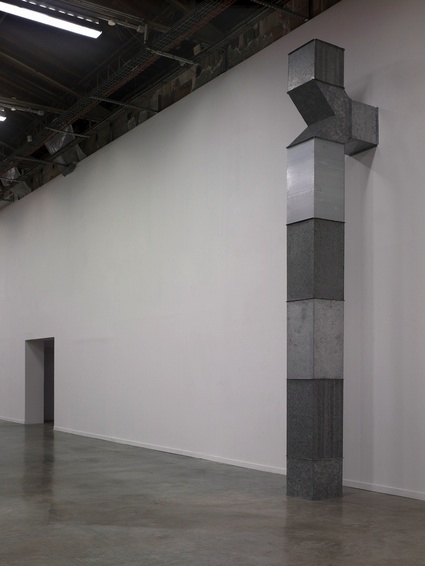 Charlotte Posenenske, Vierkantrohre Serie D, 1967-2009. Exhibition view, “Chasing Napoleon”, 2009, Palais de Tokyo. Photographie : André Morin
Charlotte Posenenske, Vierkantrohre Serie D, 1967-2009. Exhibition view, “Chasing Napoleon”, 2009, Palais de Tokyo. Photographie : André Morin
Perhaps the work i liked the best was a monumental sculpturei almost didn’t see. Charlotte Posenenske‘s Vierkantrohre is as unassuming as a ventilation shaft. The works in this series seem to come right from the industrial production, yet they have no function, no purpose whatsoever. The sculptures are conceived as modules that can be folded and shaped until they fit and almost blend into the context they found itself in.
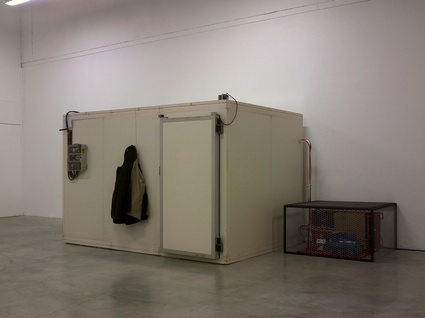 Micol Assaël, Vorkuta, 2001. Exhibition view, “Chasing Napoleon”, 2009, Palais de Tokyo. Photographie : André Morin
Micol Assaël, Vorkuta, 2001. Exhibition view, “Chasing Napoleon”, 2009, Palais de Tokyo. Photographie : André Morin
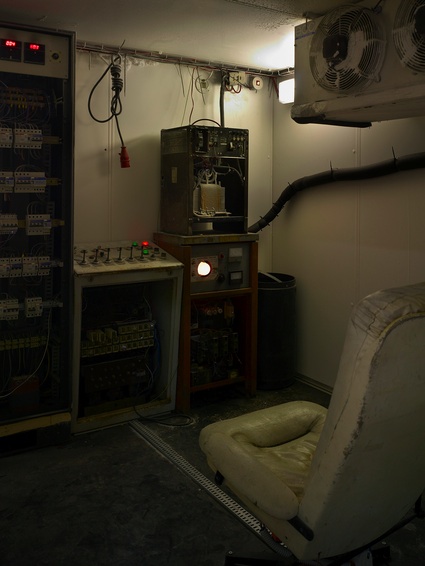 Micol Assaël, Vorkuta, 2001. Exhibition view, “Chasing Napoleon”, 2009, Palais de Tokyo. Photographie : André Morin
Micol Assaël, Vorkuta, 2001. Exhibition view, “Chasing Napoleon”, 2009, Palais de Tokyo. Photographie : André Morin
Micol Assaël invites visitors to make the Vorkuta experience. You done a heavy overcoat. Enter a refrigerated cell. The door closes behind you. The temperature inside is -30 degree Celsius, there are small electrical sparks and remains of technologies that are by now obsolete. It seems like a hazardous place to spend a few minutes but then how can it really be dangerous? You’re in a fancy contemporary art space after all. The installation is called Vorkuta, like the old coal mining town that used to be famous for being the harshest forced labour camps of the Gulag. The notorious labour camps are gone, most of the mines have closed. Only the bitter cold has remained.
In 1912 (the more i write about this show, the more i’m convinced that 1977 was just a bait), Erik Satie composed 3 shorts pieces for piano which he named Véritables préludes flasques (pour un chien) [Truly Flabby Periods (for a Dog)]. 90 years after, artist David Allen took the title literally and created a sound installation that plays Satie’s music at a high frequency in the Palais de Tokyo that only the dogs can hear. All non-dog visitors can detect are cues on the screen that betray the existence of sound we can’t perceive.
Chasing Napoleon is a collage of figures, ideas and historical facts that only the mind of a talented and whimsical curator can put together. Connecting all the lines of inquiries with one another, and adding a sense of logic on top of that is a bit of a challenge for me. It sometimes feels as if the show’s main raison d’être is to embody the ideas of seclusion, secrecy and the existence of parallel universes it purports to explore.
My pictures.
Chasing Napoleon at the Palais de Tokyo in Paris until January 17, 2010.
Previously: GAKONA at the Palais de Tokyo in Paris and SPY NUMBERS.


